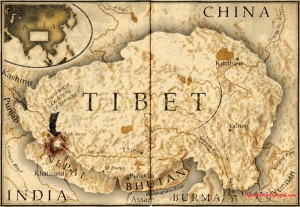
Tibet lies at the center of Asia, with an area of 2.5 million square kilometers. The earth’s highest mountains, a vast arid plateau and great river valleys make up the physical homeland of six million Tibetans. It has an average altitude of 13,000 feet above sea level.
Tibet is comprised of the three provinces of Amdo (now split by China into the provinces of Qinghai, Gansu & Sichuan), Kham (largely incorporated into the Chinese provinces of Sichuan, Yunnanand Qinghai), and U-Tsang (which, together with western Kham, is today referred to by China as the Tibet Autonomous Region).
The Tibet Autonomous Region (TAR) comprises of less than half of historic Tibet and was created by China in 1965 for administrative reasons. It is important to note that when Chinese officials and publications use the term “Tibet,” they mean only the TAR.
Tibetans use the term Tibet to mean the three provinces described above, i.e., the area traditionally known as Tibet before the 1949-50 invasion.
Despite over 40 years of Chinese occupation and repression, the Tibetan people refuse to be conquered and subjugated. The present Chinese policy, a combination of demographic and economic manipulation, and discrimination, aims to suppress the Tibetan issue by changing the very character and the identity of Tibet and its people.
Today, Tibetans are outnumbered by Han Chinese population in their own homeland.